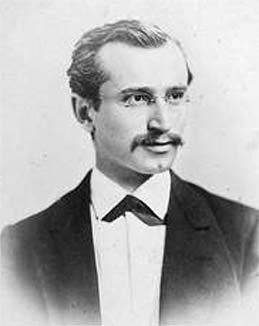
Alexander Wilhelm von Brill
 المؤلف:
J B Pogrebyssky
المؤلف:
J B Pogrebyssky
 المصدر:
Biography in Dictionary of Scientific Biography
المصدر:
Biography in Dictionary of Scientific Biography
 الجزء والصفحة:
...
الجزء والصفحة:
...
 17-1-2017
17-1-2017
 531
531
Born: 20 September 1842 in Darmstadt, Germany
Died: 8 June 1935 in Tübingen, Germany

Alexander von Brill was a nephew of Christian Wiener who has a biography in this archive.
Brill studied at the Technische Hochschule in Karlsruhe where he was taught by Clebsch who had taught in Karlsruhe since 1858. In 1863 Clebsch moved from Karlsruhe to the University of Giessen and Brill also moved to Giessen. Again taught by Clebsch, Brill graduated from Giessen in 1864. Remaining in Giessen after his graduation to undertake research, Brill submitted his habilitation thesis in 1867. After the thesis was accepted Brill was appointed a privatdozent in Giessen, a post he held for two years.
In 1869 Brill left Giessen to take up an appointment as professor of mathematics at the Technische Hochschule in Munich. There he was joined by Klein in 1875 and the two taught advanced courses to large numbers of excellent students. Brill and Klein both had a great interest in teaching and Brill, like Klein, participated in the movement to reform the teaching of mathematics. In particular Brill [1]:-
... was an initiator of the use of models of geometric figures in teaching; many such models were prepared under his guidance.
It is clear that Brill was much influenced by being a colleague of Klein's for five years and the influence would show up in many different ways throughout Brill's career. Brill taught a remarkably talented collection of students while at the Technische Hochschule in Munich including, for example Hurwitz, von Dyck, Rohn, Runge, Planck, Bianchi and Ricci-Curbastro. Although Klein left Munich in 1880, Brill was to remain there for a few more years, taking up the chair of mathematics in the University of Tübingen in 1884. Brill held this chair until he retired in 1918 at the age of 76, but continued to live and do mathematics in Tübingen after his retirement until his death at age 92.
He contributed to the study of algebraic geometry, trying to bring the rigour of algebra into the study of curves. In 1874 he published a joint work with Max Noether on properties of algebraic functions which are invariant under birational transformations. His work allowed the notion of genus of a curve, introduced by Clebsch, to be extended to singular and non-singular curves. In 1894 he wrote, again in collaboration with Max Noether, an extremely important survey of the development of the theory of algebraic functions. Pogrebyssky, in [1], also notes the importance of:-
... his papers on three-dimensional algebraic curves (1907) and on pseudospherical three-dimensional space (1885), where the impossibility of putting such a space into Euclidean four-dimensional space and the possibility of its being placed in a Euclidean five-dimensional space are proved.
Brill also wrote on determinants, elliptic functions, special curves and surfaces. He wrote articles on the methodology of mathematics and on theoretical mechanics. At age 87 he wrote a book on Kepler's astronomy
- J B Pogrebyssky, Biography in Dictionary of Scientific Biography (New York 1970-1990).
http://www.encyclopedia.com/doc/1G2-2830900630.html
Articles:
- G Betsch, Alexander von Brill (1842-1935), Bausteine zur Tübinger Universitätsgeschichte (1987), 71-90.
- S Finsterwalder, Alexander von Brill. Ein Lebensbild, Mathematische Annalen 112 (1936), 653-663.
- E Löffler, Alexander von Brill. Zur 100. Wiederkehr seines Geburtstages, Jber. Deutsch. Math. Verein. 53 (1943), 82-89.
 الاكثر قراءة في 1840to1849
الاكثر قراءة في 1840to1849
 اخر الاخبار
اخر الاخبار
اخبار العتبة العباسية المقدسة


